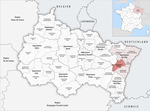Bugatti Automobiles
Auto racing teams in FranceBugatti automobilesCar manufacturers of FranceCompanies based in Grand EstFrench brands ... and 9 more
French companies established in 1998French racecar constructorsFrench subsidiaries of foreign companiesLuxury motor vehicle manufacturersMolsheimPages with French IPASports car manufacturersUse American English from May 2021Vehicle manufacturing companies established in 1998

Bugatti Automobiles S.A.S. (French pronunciation: [bygati]) is a French luxury sports car manufacturer. The company was founded in 1998 as a subsidiary of the Volkswagen Group and is based in Molsheim, Alsace, France. The original Bugatti automobile brand was established by Ettore Bugatti (1881–1947) in 1909 at Molsheim and built sports, racing and luxury cars. In November 2021, the company became part of Bugatti Rimac, a joint venture between Rimac Group and Porsche AG. Since November 1, 2021, the company has been led by Mate Rimac as chief executive officer of Bugatti Rimac.
Excerpt from the Wikipedia article Bugatti Automobiles (License: CC BY-SA 3.0, Authors, Images).Bugatti Automobiles
D422, Molsheim
Geographical coordinates (GPS) Address Website Nearby Places Show on map
Geographical coordinates (GPS)
| Latitude | Longitude |
|---|---|
| N 48.52675556 ° | E 7.499683333 ° |
Address
Château Saint-Jean (Château Bugatti)
D422
67120 Molsheim
Grand Est, France
Open on Google Maps








